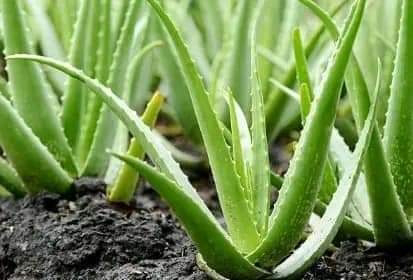Starting an Aloe Vera farming venture involves several steps. Here's a general outline to help you get started:
1. Research and Planning:
Research Aloe Vera varieties suitable for your region. Understand the local climate and soil conditions. Develop a business plan, including budget and marketing strategies.
2. Land and Location:
Choose a location with well-draining soil and plenty of sunlight. Ensure access to a reliable water source.
3. Plant Selection and Sourcing:
Acquire healthy Aloe Vera pups or seeds from reputable sources. Plant during the right season (usually spring).
4. Soil Preparation:
Prepare the soil by loosening it and improving drainage. Consider adding organic matter to enhance soil quality.
5. Planting and Spacing:
Plant Aloe Vera at the appropriate spacing (usually about 12-18 inches apart). Water them thoroughly after planting.
6. Irrigation:
Aloe Vera doesn't require frequent watering; it's drought-resistant. Water sparingly to prevent root rot, especially in rainy seasons.
7. Fertilisation:
Aloe Vera doesn't need much fertiliser, but you can use a balanced, diluted, low-nitrogen fertiliser occasionally.
8. Weed and Pest Management:
Keep the area around the plants weed-free.
Monitor for pests and apply appropriate remedies if needed.
9. Harvesting:
Aloe Vera leaves can be harvested once they reach a certain size, usually after a year. Use a sharp knife to cut leaves at the base.
10. Processing:
Remove the spines from the leaves.
Extract the gel carefully. Process the gel into various products like creams, gels, or juices.
11. Marketing and Sales:
Find markets for your Aloe Vera products, such as local stores, farmers' markets, or online platforms. Develop a branding and marketing strategy to promote your products.
12. Compliance and Regulations:
Ensure compliance with local agricultural regulations and quality standards.
13. Continuous Care:
Regularly maintain and care for your Aloe Vera plants to ensure ongoing productivity.
Remember that success in Aloe Vera farming requires patience and attention to detail. It's also essential to adapt your practices to the specific conditions of your region. Consulting with local agricultural experts or extension services can be beneficial for tailored advice.
Source: Horticulture
Regards,
Dr. Adarsha Gowda
Entrepreneurship/Startup & Consultancy
Dept of Food Science & Food Processing


No comments:
Post a Comment